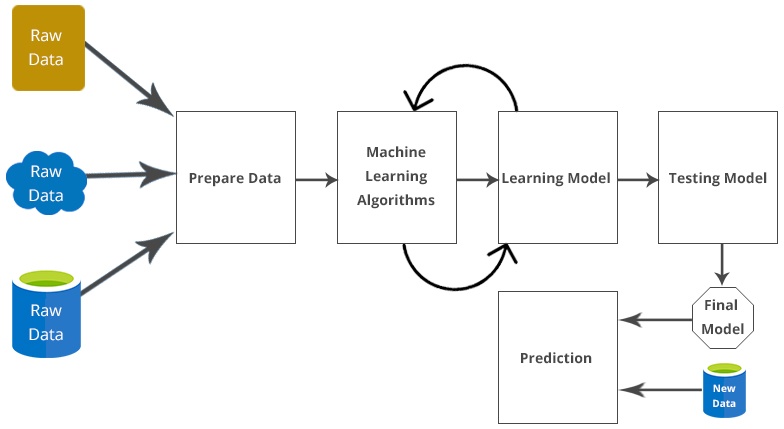Companies today are using machines now more than ever. Many of them are relying on machine learning platforms to learn more about their prospective clients, improvements in processes, and more. The ability for a machine to learn and predict brings a wider scope of many areas to businesses.
What is Machine Learning?
Machine learning is a discipline of computer science that explores the construction and study of algorithms that can learn from data. Such algorithms operate by building a model based on inputs and using that to make predictions or decisions, rather than following only explicitly programmed instructions.
Machine learning enables an enterprise to discover valuable insights hidden within their big data and accelerate the decision cycle to outperform the competition.
Examples of Machine Learning
With the advent of growing volume and complexity of the big data, continued advances and innovation in massively parallel processing, cloud storage, and elastic computing, the concept of machine learning is gaining fast momentum.
These examples range from the self-driving car, fraud detection, chatbots, speech recognition, online recommendations, text-based sentiment analysis and deep understanding of the human genome. It has strong ties with pattern recognition, artificial intelligence, and mathematical optimization.
Machine Learning Methods
There are several different processes that machines are capable of understanding. Some of the popular machine learning methods include supervised learning, unsupervised learning, semi-supervised learning, and reinforcement learning. Supervised learning creates algorithms that can be applied to what has been learned in the past to create new data. Unsupervised algorithms can draw inferences from datasets.

Figure 1. Machine Learning Process
A few of the other important machine learning algorithms are:
- Decision Trees: Using a predictive model that maps observations about an item to create conclusions about the item's value.
- Random Forests: A learning method for classification that operates by utilizing multiple decision trees.
- Linear Regression: A method used to model a relationship between X and Y continuous variables on a graph.
- Naive Bayes Classification: A family of probability classifiers based on Bayes' theorem with some assumptions between variances.
- Logistic Regression: A generalized regression methodology, primarily for when most covariates in a string of data are binary.
- Support Vector Machines: A discriminative classifier formally defined by a separating hyperplane.
- Artificial Neural Networks: An information processing model inspired by the way biological nervous systems process information.
- Nearest Neighbors: A model that chooses a random designation and continues on to the next closest property until all properties have been identified.
Machine learning applications span across multiple industries, and business are recognizing the importance of building personalized, adaptive, and efficient products and services to gain a competitive advantage and sustain growth.
Machine learning is enabling health care organizations to improve diagnoses and patient outcomes, minimize readmissions, identify the at-risk population, aid in the prevention of spread of disease, and further research and development in personalized treatment. Financial institutions and government operations utilize machine learning to help prevent fraud and reduce identity theft.
Retailers are also being empowered by machine learning, enabling them to create real-time purchase recommendations, improve customer satisfaction, and accurately predict customer churn.
About the Author
 Mahindra Dogiyal is V-Soft Consulting's Big Data & Analytics Project Manager and is based out of North Carolina. Mahindra travels the nation being responsible for formulating and implementing the big data growth strategy for V-Soft. Request some time with Mahindra and discuss Big Data strategy right here.
Mahindra Dogiyal is V-Soft Consulting's Big Data & Analytics Project Manager and is based out of North Carolina. Mahindra travels the nation being responsible for formulating and implementing the big data growth strategy for V-Soft. Request some time with Mahindra and discuss Big Data strategy right here.
When he is not working, Mahindra enjoys playing golf and helping with tiger preservation in India. Connect with Mahindra on LinkedIn here.















